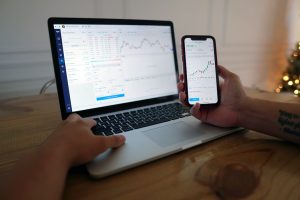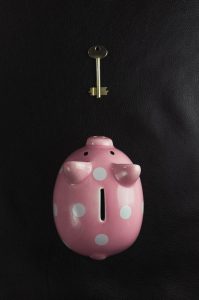Bollinger bands are a technical analysis tool that is widely used by forex traders to identify potential price movements. The bands were developed by John Bollinger in the 1980s, and they are based on the premise that price fluctuations tend to follow a normal distribution pattern. In this article, we will explore how to use Bollinger bands in forex trading, including their interpretation and application.
What are Bollinger Bands?
Bollinger bands are a set of three lines that are plotted on a forex chart. The middle line is a moving average, which is typically set at 20 periods. The upper and lower bands are calculated by adding and subtracting a multiple of the standard deviation of the price from the moving average. The most commonly used multiple is two, which means that the upper and lower bands are two standard deviations away from the moving average.
The purpose of Bollinger bands is to provide traders with a visual representation of the volatility of the market. When prices are moving within a tight range, the bands will be close together, indicating low volatility. Conversely, when prices are making large swings, the bands will widen, indicating high volatility.
Interpreting Bollinger Bands
There are several ways to interpret Bollinger bands, but the most common is to look for trading opportunities when the price moves outside of the bands. When the price touches or exceeds the upper band, it is considered overbought, and when it touches or falls below the lower band, it is considered oversold.
Traders can use this information to enter trades in the direction of the trend. For example, if the price is in an uptrend and it touches the lower band, it may be a good time to buy as the price is likely to bounce back up. Similarly, if the price is in a downtrend and it touches the upper band, it may be a good time to sell as the price is likely to drop back down.
Another way to interpret Bollinger bands is to look for divergences between the price and the bands. A bullish divergence occurs when the price makes a lower low, but the bands make a higher low, indicating that the downward momentum is slowing down. A bearish divergence occurs when the price makes a higher high, but the bands make a lower high, indicating that the upward momentum is slowing down.
Applying Bollinger Bands in Forex Trading
There are several ways to apply Bollinger bands in forex trading, but the most common is to use them in conjunction with other technical indicators. For example, traders may use Bollinger bands with a momentum indicator such as the Relative Strength Index (RSI) to confirm trading signals.
One popular strategy is the Bollinger Band Squeeze, which occurs when the bands are at their narrowest point. This indicates that the market is in a period of low volatility and that a breakout is imminent. Traders can use this information to enter trades in the direction of the breakout.
Another strategy is to use Bollinger bands to identify support and resistance levels. When the price touches or exceeds the upper band, it may act as a resistance level, and when it touches or falls below the lower band, it may act as a support level. Traders can use these levels to enter trades or place stop-loss orders.
Conclusion
Bollinger bands are a powerful technical analysis tool that can help forex traders identify potential price movements. By providing a visual representation of the volatility of the market, traders can use Bollinger bands to enter trades in the direction of the trend or to identify trading opportunities when the price moves outside of the bands. However, traders should always use Bollinger bands in conjunction with other technical indicators and fundamental analysis to confirm trading signals and to manage risk.





